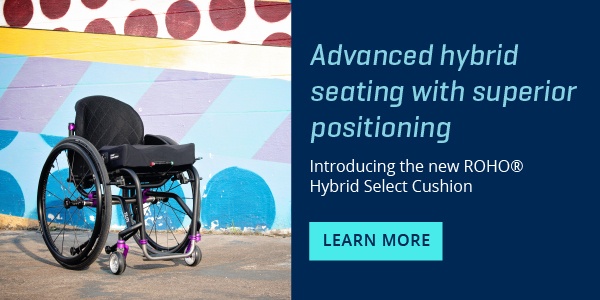This is the 1st blog in our series about cushion considerations. Check out the Wheelchair Seating and Positioning Guide for more information about wheelchair seating.
Pressure cannot be eliminated in seating, so instead, we must focus on the redistribution of pressure. There are different theories used to achieve the distribution of pressure; immersion/envelopment and offloading/redirecting.
Immersion
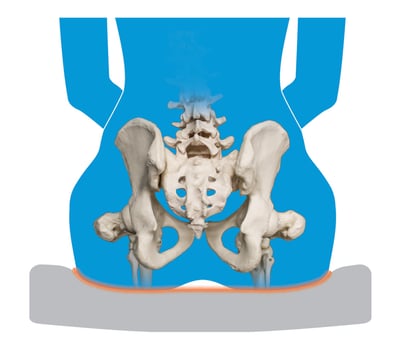 Immersion is the ability for the body to sink into material. It is defined as the depth the body sinks into the support surface.
Immersion is the ability for the body to sink into material. It is defined as the depth the body sinks into the support surface.
Envelopment
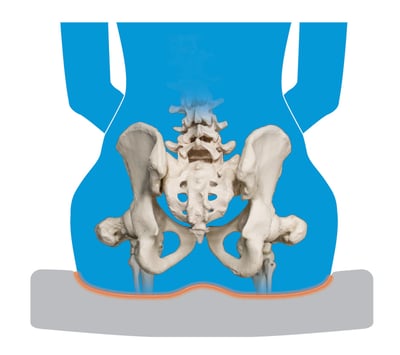
Envelopment is defined as the support surface's ability to conform around the contours of the body. Immersion and envelopment are commonly seen together when a surface both allows the body to sink in while providing the surface contact through matching the body contours.
Offloading
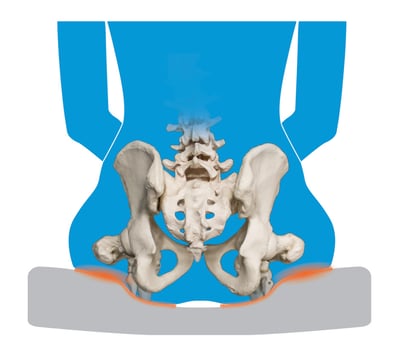
Offloading is the reduction of pressure from one area of the body to another in an effort to reduce risk of tissue injury. The pressure from one area is redirected to other areas of the body, considered more tolerant of the increased pressure. You can have either full or partial offloading, depending on the design of the cushion.
The design of the cushion includes built-in contours that help align and stabilize the spine, pelvis, and lower extremities to allow the pressure and shear forces to be transferred to a greater surface area.
One method of pressure distribution is not necessarily better than the other; the clinician and client must understand what the benefits and considerations are of each method and choose the best option for each patient. Some things to consider when deciding on the method that will meet the client postural and functional needs include:
- How much stability is required at the pelvis? Can the client maintain a stable and functional position with the dynamic stability of an immersive cushion, or do they require the type of stability provided by a contoured base?
- How much stability is required at the pelvis? Can the client maintain a stable and functional position with dynamic stability of an immersive cushion, or do they require more contoured stability provided with a contoured base?
- Which type of surface feels best to you? Comfort is subjective and is very important for compliance!
Usually EITHER immersion/envelopment OR offloading must be chosen as cushions are designed to perform using one method OR the other. However, with the new ROHO® Hybrid Select cushion, Optional offloading comes standard. The Hybrid Select provides flexibility and forgiveness that other off-loading cushions do not, making it easier to be in the right position each time. The Hybrid Select offers an exclusive optional off-loading technique by removing the ischial tuberosities (IT) air insert. The cushion can be used with the immersion theory and then changed to offloading or the other way around. The adjustment and ability to modify the cushion to meet the clients’ changing needs has always been at the forefront of the ROHO® philosophy.
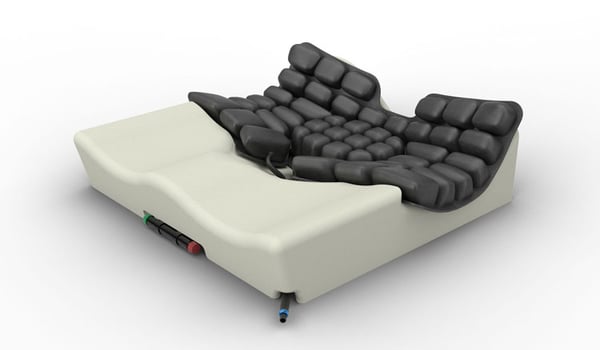
Join us next time in our cushion considerations blog series as we discuss why the materials of cushion solutions matter.
 Brenlee Mogul-Rotman, OT, ATP/SMS
Brenlee Mogul-Rotman, OT, ATP/SMSNational Clinical Education Manager - Canada
Brenlee is an occupational therapist and ATP/SMS (Assistive Technology Professional/Seating & Mobility Specialist). Brenlee has been practicing for 30 years. For the past 22 years, she has owned and operated a private practice in the Toronto, Ontario, Canada area. She has also worked on a part time basis as the ROHO Clinical Consultant in Canada for the past 15 years. Brenlee joined the Permobil Canada team in September 2016 as the National Clinical Education Manager. Brenlee is a member of the Ontario Society of Occupational Therapists, College of Occupational Therapists of Ontario. She spent 6 years on the RESNA Professional Standards Board and is a current Board Member with the Canadian Spinal Research Organization.
 Angela Regier, OTD, OTR/L, ATP/SMS
Angela Regier, OTD, OTR/L, ATP/SMS
Clinical Education Manager ‑ Western Region
Angela Regier, OTD, OTR/L, ATP received her doctorate of occupational therapy from Creighton University in 2007 and is a RESNA-certified assistive technology professional. Regier joined Permobil in 2017 as a Clinical Education Manager for the western region. Prior to joining Permobil, Regier was at Craig Hospital in Englewood, Colorado where her career focused on inpatient and outpatient spinal cord injury rehabilitation. Prior to leaving Craig Hospital, she was supervisor of the Wheelchair Seating and Mobility Clinic where she provided comprehensive seating and mobility interventions for individuals with acquired brain and spinal cord injury. Regier has published and speaks on the topic of seating and mobility for acquired brain injury and spinal cord injury. She has also served as an adjunct faculty for the Creighton University Entry-Level Distance OTD Program (Regis) in Denver, Colorado.

